

|
|
Exercise Initial Link '08 - The Boys from Bahrain From May 11-22 the Royal Bahraini Air Force (RBAF) played host to the 14th Exercise Initial Link. This year marked the 20th anniversary of the exercise. Séan Wilson reports exclusively.
Impetus The first Initial Link exercise, a joint initiative between the RBAF and USAF, was held in 1988. As a result of the intensified military cooperation between the Gulf states and the USA during the Gulf War of 1990/91 the exercise was expanded to include the other members of the Gulf Cooperative Council, namely Kuwait, Oman, Qatar, Saudi Arabia and the United Arab Emirates (UAE). This decision was essential to improve interoperability as Brigadier General Hamad Bin Abdulla Al-Khalifa, RBAF Commander, explained: “The liberation of Kuwait required an allied coalition consisting of the forces from many countries. We realised that the only way such a large force would be effective in the future was if we trained together. The goal right from the beginning was to enhance the capabilities of our pilots. Training with the USAF in particular enables us to practice manoeuvres that we do not normally do, such as carrying out air-to-air refuelling.”
Close to the real thing The scale of the exercise saw it switch from being an annual to a biennial event in 2000. The format of Initial Link sees participants operating from their own countries with the exception of the USAF and US Navy. Delegations from all participating nations were present at Shaikh Isa air base in the south of Bahrain throughout the exercise. Representatives from Egypt, Italy and Jordan were present this year to act as observers. The Hezaam Al Tawoon (HAT) system, an Arabic term which translates as Joint Cooperation, provides a secure radio network and hotline connection between the Gulf States. In addition, the HAT system allows the Gulf States to share their respective radar pictures thereby providing each with radar coverage of the entire Gulf region. This enables the exercise to be coordinated from the Air Operations Centre (AOC) located at Shaikh Isa, using fax to securely relay the Air Tasking Order (ATO) to the participants. As Brigadier General Hamad Bin Abdulla Al-Khalifa explained: “This brings us as close to reality as possible. If there is a threat on any country in the region you do not want to send all of your forces to that country, as congregating in one area is obviously a bad idea. A much better solution is to defend from different locations.”
Game on During the first three days of the exercise only air-to-air sorties were flown, giving pilots the opportunity to focus on dissimilar air combat training (DACT). The full-scale exercise began on day four with Bahrain, Qatar, Saudi Arabia and the USAF operating in the blue role. This left Kuwait, UAE and the US Navy to act as aggressors flying offensive counter air (OCA) missions. All OCA sorties required air-to-air refuelling (AAR), Airborne Warning and Control System (AWACS) support and suppression of enemy air defence (SEAD) missions. The defensive counter air (DCA) sorties flown by the blue forces focused on beyond visual range (BVR) tactics, utilising Advanced IFF (AIFF) avionics systems, ground control intercept (GCI) radar installations and AWACS to identify hostile targets. During the second week of the exercise roles were reversed giving all participants the opportunity to practice offensive and defensive tactics. The total number of sorties planned for the entire exercise was 454. Of this total, 325 were achieved with the rest cancelled due to poor weather or ground aborts. The final day of the exercise saw the largest aircraft packages face-off against each other, with 42 OCA versus 18 DCA.
Future exercises As is the case with any exercise the goal is always to evolve. This year saw the RBAF introduce the Raytheon MIM-23 Homing All the Way Killer (HAWK) Phase III medium-range surface-to-air missile (SAM) into the exercise for the first time. The HAWK is a mobile, all-weather, day-or-night system that is effective against electronic countermeasures. This highly lethal SAM provides low to medium altitude defense against a host of targets including jet and rotary wing aircraft, unmanned aerial vehicles (UAVs) and cruise missiles. The Phase III configuration makes defense against tactical missiles possible. The goal for the next exercise, scheduled to take place in 2010, is the introduction of video conferencing. As such the RBAF have already begun to modify their AOC. A similar version of this article first appeared in AIR International August 2008 (pp54-57).
|
||
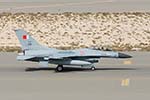 |
||
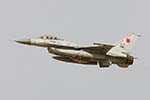 |
||
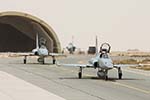 |
||
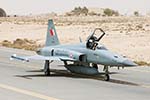 |
||
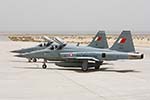 |
||
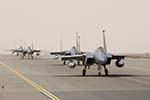 |
||
 |
||
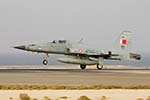 |
||
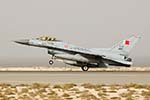 |
||
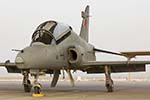 |
||
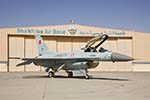 |
|
03 November 2008 |
© Séan Wilson 2008